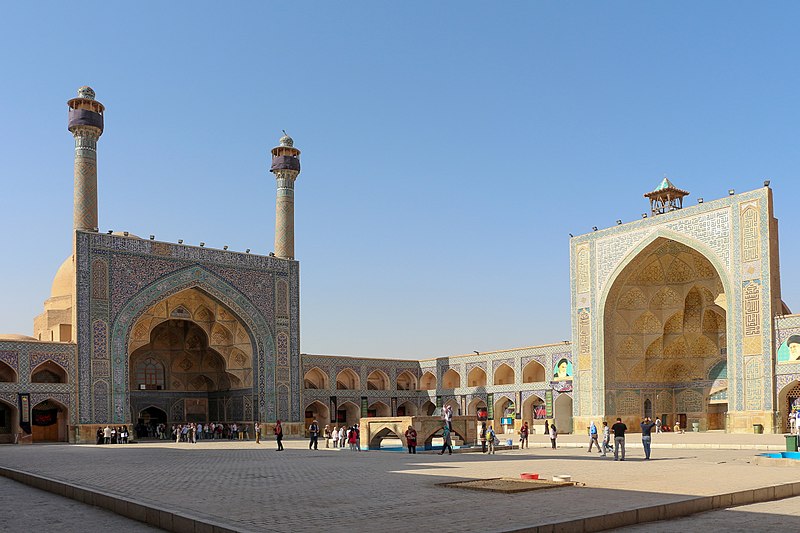Located in the historic centre of Isfahan, the Masjed-e Jāmé (‘Friday mosque’) can be seen as a stunning illustration of the evolution of mosque architecture over twelve centuries, starting in ad 841. It is the oldest preserved edifice of its type in Iran and a prototype for later mosque designs throughout Central Asia. iran tour The complex, covering more than 20,000 m2, is also the first Islamic building that adapted the four-courtyard layout of Sassanid palaces to Islamic religious architecture. Its double-shelled ribbed domes represent an architectural innovation that inspired builders throughout the region. The site also features remarkable decorative details representative of stylistic developments over more than a thousand years of Islamic art.
Masjed-e Jāme’ is the oldest Friday (congregational) mosque in Iran, located in the historical centre of Isfahan. The monument illustrates a sequence of architectural construction and decorative styles of different periods in Iranian Islamic architecture, covering 12 centuries, most predominantly the Abbasid, Buyid, Seljuq, Ilkhanid, Muzzafarid, Timurid and Safavid eras. Following its Seljuq expansion and the characteristic introduction of the four iwans (Chahar Ayvān) around the courtyard as well as two extraordinary domes, the mosque became the prototype of a distinctive Islamic architectural style.
The prototype character is well illustrated in the earliest double-shell ribbed Nezam al-Molk dome, the first use of the four iwan (Chahar Ayvān) typology in Islamic architecture, as well as the textbook character of the Masjed-e Jāme’ as a compilation of Islamic architectural styles. The Masjed-e Jāme’ of Isfahan is an outstanding example of innovation in architectural adaptation and technology applied during the restoration and expansion of an earlier mosque complex during the Seljuq era, which has been further enlarged during later Islamic periods by addition of high quality extensions and decoration.

Comment (0)